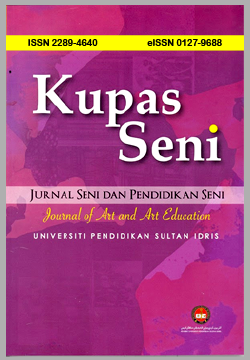Understanding Behaviour and Preference: A Study on Designing Litter Prevention Outdoor Signage
DOI:
https://doi.org/10.37134/kupasseni.vol10.1.6.2022Keywords:
Signage Design, Littering, Sustainability, Public Park, Planned Behavior, Communication ModelAbstract
This paper discusses Understanding Behaviour and Preference: A Study On Designing Litter Prevention Outdoor Signage. Creating an effective awareness and environmental education has always been a challenge in sustainable development. After the travel ban was lifted, there is a significant increase in improperly disposed garbage in public areas due to an increase in visitors. To achieve goals 12,13, 14, and 15 of the Sustainability Development Goals (SDGs)s, these issues need to be tackled first and foremost. This study attempts to investigate the issue of littering behavior using a quantitative method. The survey data was collected using 50 respondents as simple random sampling. Three designs that were developed using Lasswell’s Communication Model are put to test with local park visitors. The results are then used to draw a relationship between demographic background and littering behavior as well as their design preferences. The results revealed that the design with an educational message is most preferable to visitors and the use of the image is more preferable than the symbol. Future studies, it is expected to develop studies related to design preferences and demographic by applying the Theory of Planned Behaviour and Lasswell’s 5W Communication Model in planning for the design.
Downloads
References
Ajzen, I. (1991). The Theory of Planned Behavior. Organizational Behavior and Human Decision Processes, 50(2), 179–211.
Amirul Aiman, H. (2021, October 5). Sampah di Pantai Remis meningkat tiga kali ganda. Harian Metro. https://www.hmetro.com.my/mutakhir/2021/10/763007/sampah-di-pantai-remis-meningkat-tiga-kali-ganda
Brown, T. J., Ham, S. H., & Hughes, M. (2010). Picking up litter: an application of theory-based communication to influence tourist behaviour in protected areas. Journal of Sustainable Tourism, 18(7), 879–900.
Costanzo, P. J. (2018). A Course Project Designed to Aid Students’ Understanding of the Structure of Advertisements: An Application of the Who Says What to Whom over What Channel with What Effect Model. Atlantic Marketing Journal, 7(1), 49–65.
Creswell, J. W. (2014). A concise introduction to mixed methods research. SAGE publications.
Dolzhenkova, E. (2021). Problems of sustainable implementation of the communication mechanism in the digital environment. E3S Web of Conferences 258.
Harold D. Lasswell. (1948). The structure and function of communication in society. Lyman Bryson (Ed.), 17(3), 267–271.
Hayati, I., Mariapan, M., Evelyn, L. L. A., & Sheena, B. (2021). Environmental concern, attitude, and intention in understanding student's anti-littering behavior using structural equation modeling. Sustainability (Switzerland), 13(8).
Jeffress, L. W. (2015). Mass Communication Theories in a Time of Changing Technologies. Mass Communication and Society, 18, 253–530.
Ketter, E., & Avraham, E. (2012). The social revolution of place marketing: The growing power of users in social media campaigns. Place Branding and Public Diplomacy, 8(4), 285–294.
Malinda, A. M. (2021, October 19). Lokasi Tumpuan Pulau Pinang Jadi Tong Sampah. Malaysia Gazette. https://malaysiagazette.com/2021/10/19/lokasi-tumpuan-pulau-pinang-jadi-tong-sampah/
Muhammad Farid, A. T. (2021, November 17). Lebih 1,000kg sampah dikutip di kawasan pantai. Kosmo. https://www.kosmo.com.my/2021/11/17/lebih-1000kg-sampah-dikutip-di-kawasan-pantai/
Muratovski, G. (2016). Research for Designers: A Guide to Method and Practice. SAGE Publications.
Newcomb, E. T., & Newcomb, B. B. (2020). Comparative Effects of “Do” Versus “Don’t” Formatted Signage on Littering. Behavior and Social Issues, 29(1), 264–271.
Nor Akmar, A. A., Arief Aiman, L., John Keen, C., & Daud, D. S. R. (2019). Public Perception to Littering in Greenspaces: A Case Study in Bintulu, Sarawak, Malaysia. Journal of Physics: Conference Series, 1358(1).
Downloads
Published
Issue
Section
License
Copyright (c) 2022 Sarah Sajap, Noor Azly Mohammed Ali, Huajin Zhang

This work is licensed under a Creative Commons Attribution-NonCommercial-ShareAlike 4.0 International License.





